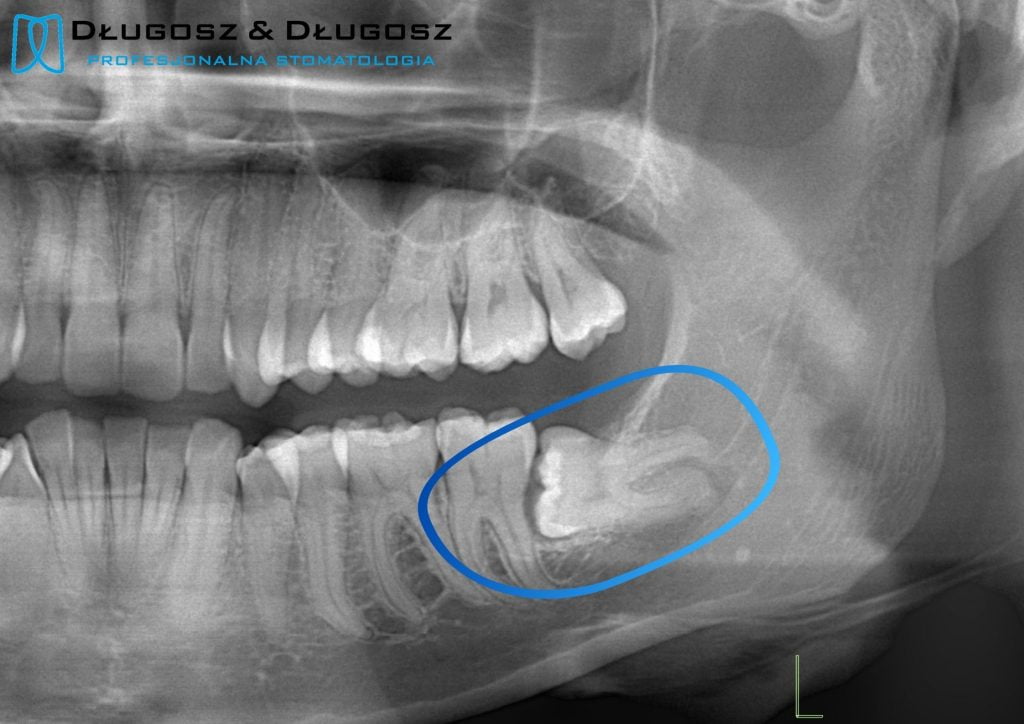Removal of an impacted tooth
Surgical removal of an impacted tooth – wisdom teeth
What are impacted teeth?
“Impacted teeth” are teeth that are stuck in the jaw bone, either completely or partially. Unfortunately, such teeth can cause us big problems. An impacted wisdom tooth can press on neighbouring teeth, causing them to crowd, move neighbouring teeth, and can also cause problems with the temporomandibular joint. It can even lead to trismus (i.e. difficulty opening the mouth), e.g. by exacerbating the inflammation associated with difficult eruption.
When to remove impacted wisdom teeth? What are the indications for their removal?
We often wonder when it is the best time to remove impacted wisdom teeth. The answer is simple → as soon as possible, go to see a dental surgeon to assess whether your case is urgent and requires quick intervention. If the doctor considers it necessary, they will also refer you for a consultation with an orthodontist.
The main indication for the removal of an impacted tooth is primarily its position:
- when it is positioned horizontally and does not erupt towards the dental arch, it will cause major dental problems
- recurrent inflammation or exacerbation of chronic inflammation connected with difficult eruption, which may occur when the body’s immunity is weakened
- the eruption of wisdom teeth causes discomfort in the form of earache or chronic headaches.
If you regularly see your dentist from an early age, you can detect which wisdom teeth will require surgical removal. In such a case, we can offer younger patients a procedure called germectomy – i.e. removal of wisdom tooth germs before the roots develop.
How to prepare for the procedure of removing an impacted tooth?
First of all, appropriate diagnostic imaging should be done – i.e. a panoramic X-ray (or if the tooth is located close to the inferior alveolar nerve), we recommend cone beam CT (CBCT). A thorough examination confirms the exact position of the tooth and its roots, which allows us to perform the extraction procedure with maximum precision, reducing the risk of nerve damage, and also to remove the tooth with the least possible trauma. The risk of swelling and pain after the extraction is also lower.
You should have something to eat before the visit, as right after the procedure we recommend waiting about 2-3 hours before you eat.

Remember! The tooth extraction procedure itself is painless – it is performed under appropriately selected local anaesthesia. After the procedure, you should take it easy, not do sports, and avoid heavy physical work.